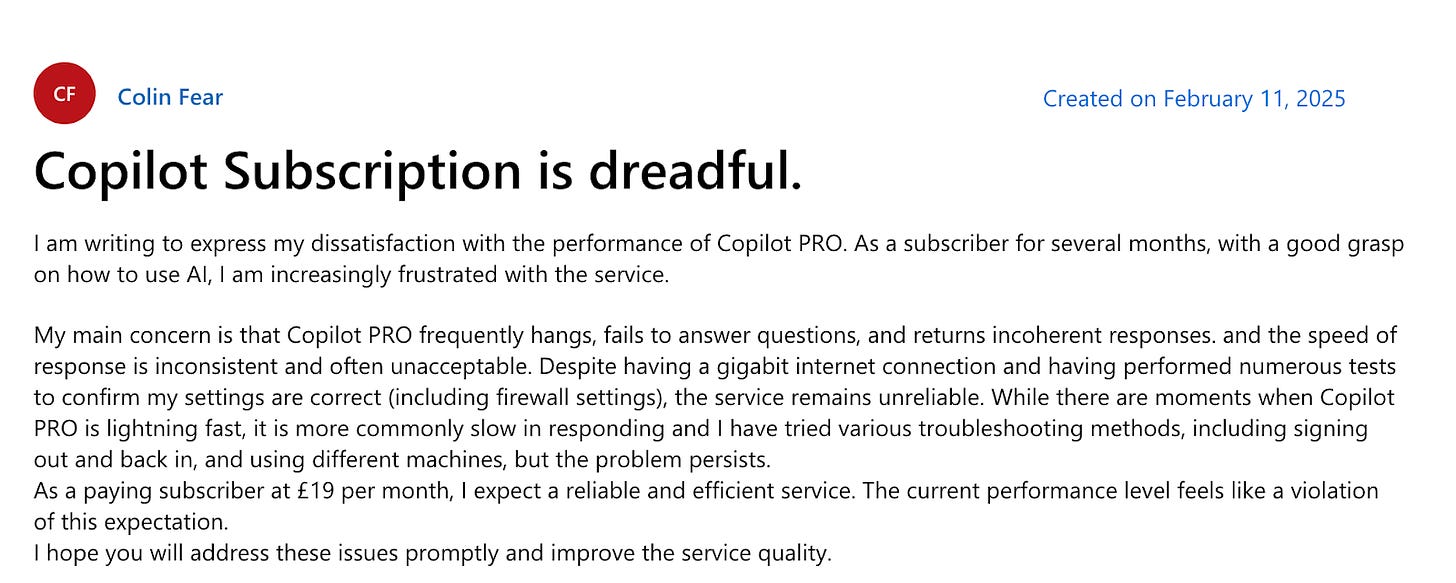Where's the gold in the business intelligence shake-up?
The changing pricing dynamics and intelligence as an elastic resource
In the simpler days (circa pre-AI), selling enterprise analytics software used to be textbook:
You built a tool that solved for a workflow
You convinced some key people that your tool offered great flexibility and workflow coverage to drive efficiencies.
You licensed it by seat.
You hoped their org and usage would keep growing.
Your success as a SaaS company was directly proportional to the buyer's organizational chart size. The more bloated it gets, the better for you (selling more licenses).
But that world is disappearing. Thanks to AI, the fundamental shift today is being able to do more with less. And so if your business model still depends on expanding headcount, you're no longer aligned with your customer. You're a tax on their ambition to streamline. Every additional license becomes a liability.
What’s the pricing model for a world where every additional seat is a liability more than an asset?
The restacking of the analytics pyramid
This is not theoretical. Pricing models that depend on seats look increasingly quaint. The vendors that used to live comfortably in their analytics stack layer are suddenly breaking character.
Take Snowflake and Databricks, for instance. They began on opposite ends of the data complexity spectrum. Snowflake was more optimized for BAs using SQL, while Databricks focused on data scientists and engineers. However, the gravity of this enterprise stack change is pulling them towards the same singularity. Both platforms are now climbing up the stack (from solving for helping structure and scale business data) by investing in building the semantic layer that would act as the ‘meaning-making’ layer between data and insights.
However, once this layer is established, nothing’s stopping them from going further up the chain.
Databricks aims to push real-time insights and autonomous action through Agentbricks and Unity Metrics. Snowflake promises to be the brainstem of the business through its Cortex Knowledge Extensions, which aim to empower agents to act.
Traditional SaaS players, like Salesforce, have fully plugged into the agent-verse. In what is a complete 180 degree turn, they are going from building structured workflows for humans on top of systems of record to now having an ecosystem of agents that can act autonomously. These agents don’t just read from systems of record but now can write back to them, complete actions, and trigger workflows, all without waiting for a human to click ‘next.’
Thus, the human-less analytics-action-update loop is being born.
Neon (acquired by Databricks) reports that AI agents now spin up more databases than human developers (4x as many). As more agents spin up databases and write to them, the company’s infrastructure is already being built, scaled and managed by bots.
I bet it would be quite a mess initially. But you can’t argue that the lines aren’t blurring.
Which brings us to the billion (trillion? million?) dollar question: Where do companies capture value exactly?
Pricing for a post-human loop is still evolving.
The unquestioned credo of pricing per seat or license suddenly feels very quaint.
It’s still the predominant model, but increasingly, firms are adopting different ways to price in this changing world.
If you are a traditional seat-based company, your natural instinct is to add AI-based inferences and copilots to existing tools. But this brings up a pricing conundrum. The AI layer will now adopt a different pricing model (usage-based), but customers have yet to see its full value. Would they be happy paying for the seats and additional AI usage on top of that?
It's a hard sell even if you have established a corporate stronghold like Microsoft.
If you aren’t making billions through seat-based pricing, perhaps you can take a more radical approach. Customer support saas firms have gone in this direction more readily (also easier to attribute outcomes and usage).
Zendesk, Intercom, and Forethought have all adopted some version of “pay us only when our AI does a task for you” pricing. Intercom’s Fin AI Agent charges per resolution, uncoupled from seat counts entirely. Forethought blends platform access fees with usage-based deflection pricing, meaning you only pay when their AI actually resolves tickets without handing off to a human.
Clearly, a shift is underway. The key conflict playing out right now is, “How do we transition customers and businesses from the per-seat subscription-type pricing to pricing where they get to use AI for outcomes?”
Self-service BI as a free onramp to AI metering?
The common understanding of where pricing is moving is this:
Seats/licenses → Usage-based → Outcome-based
Consumption or usage-based pricing appears to be the natural first step. Many of the AI features being slapped on have moved to this model. But how do you price traditional BI offerings through consumption pricing if their value dwindles drastically? Surely, it wouldn’t make any sense to charge users based on the number of dashboards they create or queries they run.
Those building AI layers will actively try to commoditize these features. Dashboards and tools will become free on-ramps to the ‘intelligence’ on tap (powered by AI).
There have been several initial steps in this direction. Snowflake's Cortex Analyst feature, which leverages the semantic layer to try to make analytics self-service with natural language SQL, is offered at no cost. Snowflake will meter the AI token juice instead. Narrative BI's agent analytics platform is offered for free. Databricks' Genie and low-code dashboards are free while metering the jobs run by AI.
Just like AWS made compute an elastic resource that can be priced based on usage, we are seeing a shift towards ‘intelligence’ being an elastic resource that can be priced basis consumption.
To be fair, the AI credits or tokens are proxies for intelligence. Do companies extract actual intelligence remains to be seen.
So, where is the value?
The battleground is shifting to the “System of Intelligence” layer. Whoever controls the metrics, embedded business logic, and context can power autonomous decision making. The ‘business algorithm’ will be monetizable.
Companies that build an accurate business map to drive insights will start creating a moat. As this layer begins to enable business decision-making, the value will start to become more transparent.
The surprise (not anymore) is that the most potent attack to own this layer appears to be coming from the data/compute layers (Snowflake, Databricks, AWS, etc.). The traditional BI/Analytics tools have been caught flat-footed. Salesforce has been pushing quite aggressively on the customer intelligence side to own the insight and action layers there.
The agent army will undoubtedly help reinforce the loop. As more agents execute and seek intelligence, they’ll create a virtuous cycle to keep the meter running. More execution on top begets more insights, which begets more intelligence usage.
It would be interesting to see how this evolves.
~Babbage Insight






Companies that build an accurate business map to drive insights will start creating a moat. Are there examples of this happening already?